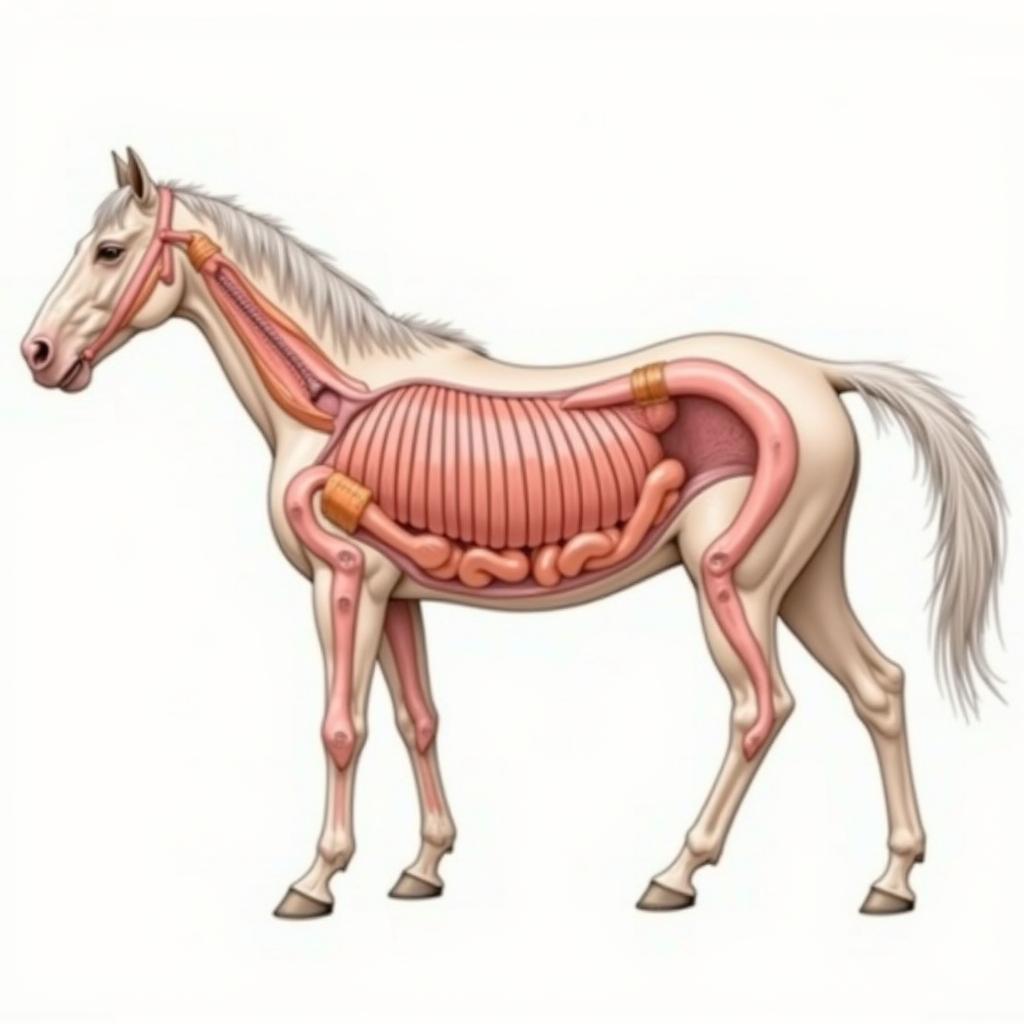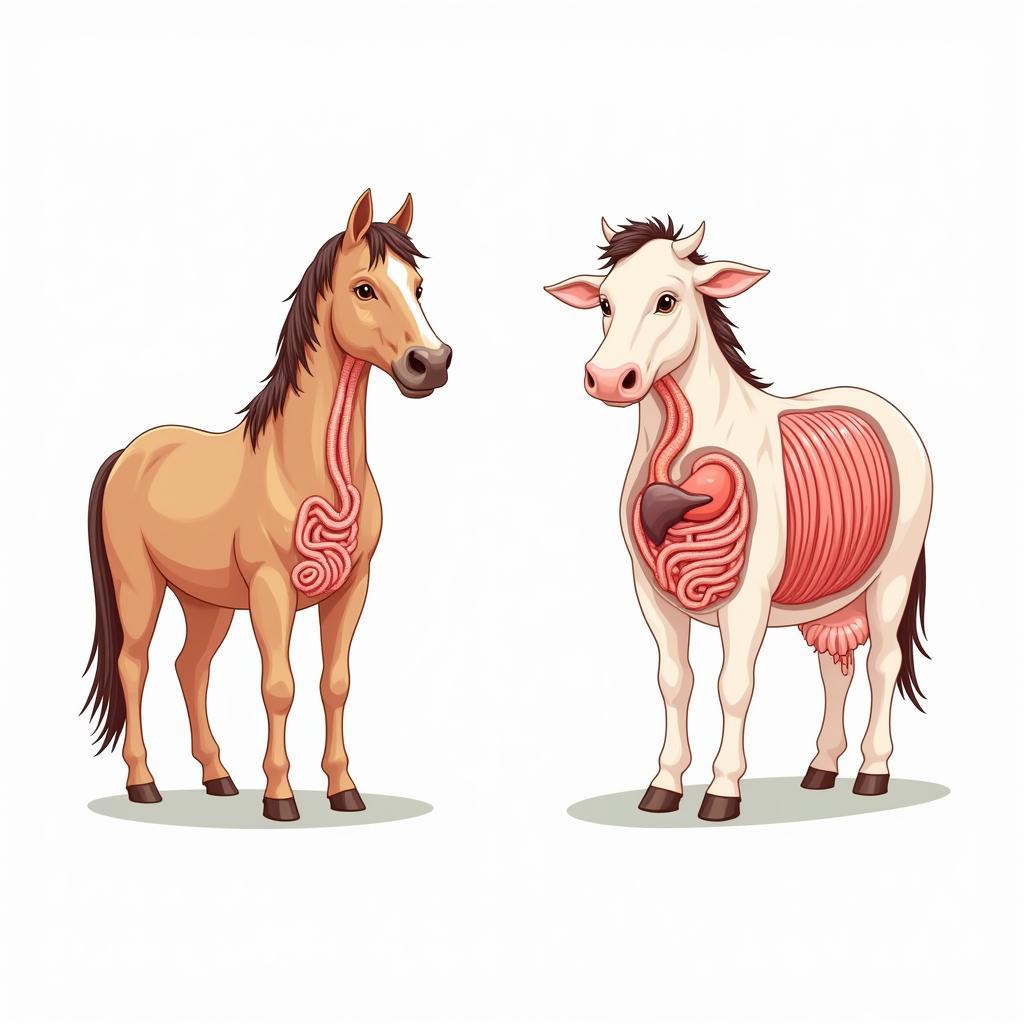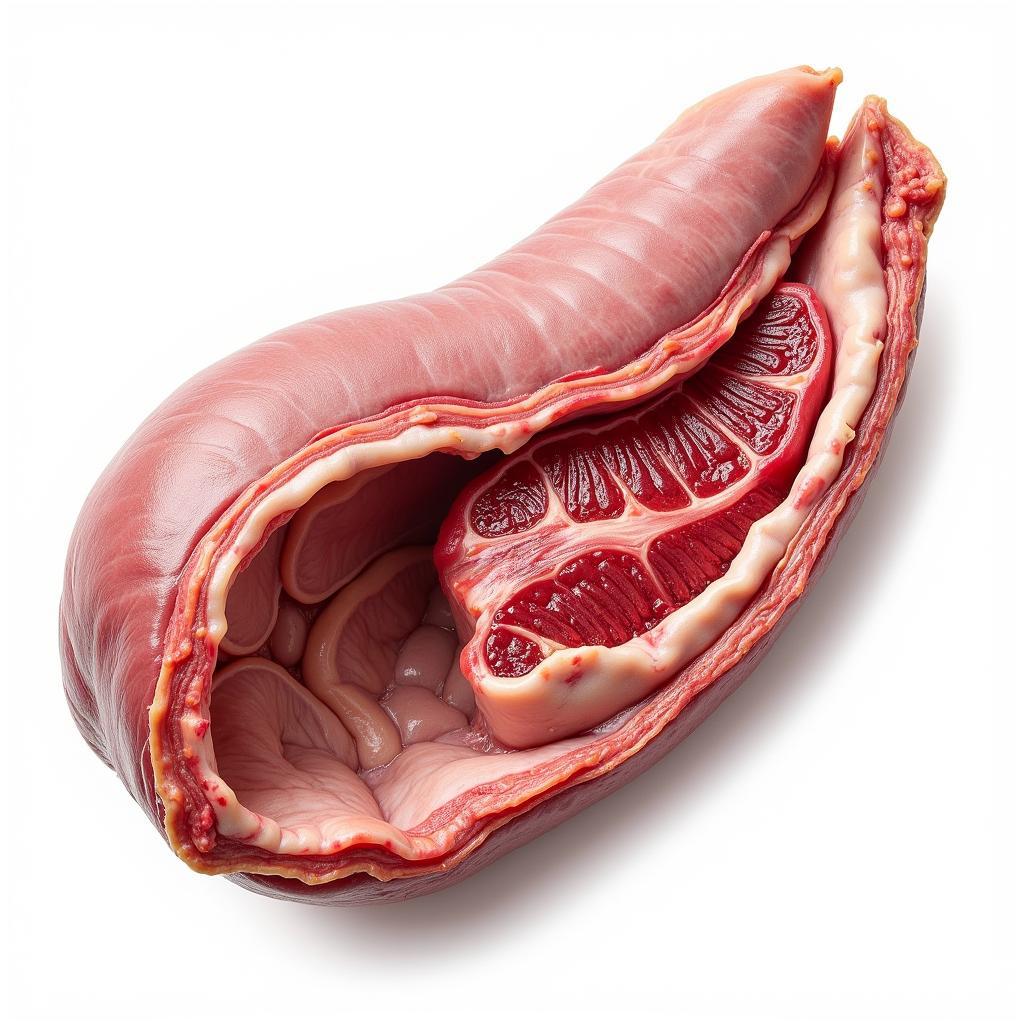Understanding the intricate anatomy of horses and ruminants is crucial for veterinary professionals, students, and anyone passionate about animal science. Dissection, while often met with apprehension, offers an unmatched opportunity to delve into the complexities of these magnificent creatures. This guide will navigate you through the key aspects of equine and ruminant dissection, providing valuable insights into their unique physiological adaptations.
 Diagram of the Equine Digestive System
Diagram of the Equine Digestive System
Unveiling Equine Anatomy: A Closer Look
Horses, with their grace and athleticism, possess a digestive system uniquely adapted to their herbivorous diet. Unlike ruminants with their multi-compartment stomachs, horses rely on a single stomach and an extensive hindgut for the fermentation of plant material. Dissection allows us to appreciate the delicate balance within this system.
Examining the equine digestive tract reveals a relatively small stomach, reflecting their natural grazing habits which favor frequent, small meals. Moving along, we encounter the small intestine, where enzymatic digestion plays a crucial role. The cecum, a large, comma-shaped organ, marks the beginning of the hindgut and houses a diverse population of microbes essential for breaking down cellulose, the main component of plant cell walls.
 Comparison of Horse and Cow Digestive Systems
Comparison of Horse and Cow Digestive Systems
Delving into Ruminant Physiology: A Four-Chambered Marvel
Ruminants, including cows, sheep, and goats, present a fascinating example of evolutionary adaptation. Their digestive system, characterized by a four-compartment stomach, allows them to thrive on a diet primarily composed of plant matter.
Dissection reveals the remarkable complexity of the ruminant stomach. The rumen, the largest compartment, acts as a fermentation vat where a complex community of microorganisms works tirelessly to break down cellulose. The reticulum, honeycomb-like in appearance, aids in separating smaller food particles from larger ones. The omasum, with its many folds, further increases surface area for water absorption. Finally, the abomasum, often referred to as the “true stomach,” secretes digestive enzymes, much like the stomach in monogastric animals.
 Close-Up of Ruminant Stomach Dissection
Close-Up of Ruminant Stomach Dissection
The Importance of Dissection in Understanding Animal Science
Dissection, far from a mere academic exercise, provides invaluable hands-on experience and deepens our understanding of animal physiology. By carefully examining each organ and its relationship to others within the body cavity, we gain a greater appreciation for the remarkable adaptations that allow horses and ruminants to thrive.
Conclusion
The dissection of horses and ruminants offers an unparalleled opportunity to explore the complexities of their anatomy and physiology. By understanding the intricate workings of their digestive systems, we gain valuable insights into their nutritional needs, health management, and overall well-being. This knowledge is essential for veterinary professionals, students, and anyone passionate about caring for these incredible animals.
For personalized assistance with your equine needs, please contact us at Phone Number: 0772127271, Email: [email protected]. We also welcome you to visit our location at QGM2+WX2, Vị Trung, Vị Thuỷ, Hậu Giang, Việt Nam. Our dedicated customer support team is available 24/7 to address your inquiries.